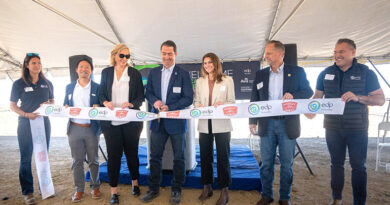New FERC order allows aggregated distributed energy resources to participate in wholesale markets
Today, national business group Advanced Energy Economy applauded approval by the Federal Energy Regulatory Commission (FERC) of a long-awaited rule (FERC Order No. 2222) directing Regional Transmission Organizations (RTOs) and Independent System Operators (ISOs) to open their markets to participation by distributed energy resources (DERs). The vote was 2-1, with Commissioner Danly dissenting.
Today @FERC approves a historic final rule, empowering DERs to compete in all wholesale electric #markets. This bold action enhances #competition, encourages #innovation & helps drive down costs for consumers. #energytwitter
— Neil Chatterjee (@FERChatterjee) September 17, 2020
“We applaud FERC for taking this critical and long-awaited step to open competitive wholesale electricity markets to distributed energy resources. Having worked on this important rulemaking since 2016, we are thrilled that FERC has now taken action to reduce barriers to these technology innovations in wholesale markets,” said Jeff Dennis, managing director and general counsel at AEE. “While we are still reviewing the details of the Commission’s decision, it appears that FERC has delivered a welcome and much needed win for U.S. consumers — as Chairman Chatterjee said this morning, ‘When DER aggregations line up and compete with traditional resources to provide all the energy, ancillary services, and capacity that they have to offer — consumers win.’ We couldn’t agree more.”
“Allowing this growing base of customer-owned and controlled resources to engage in these markets will improve competition, lower rates, give consumers more choice and provide needed flexibility that will support the reliability and resilience of our electricity grid,” said Dennis. “This is a boon to American innovation that will save customers money while reducing carbon emissions. By improving the economics of clean, affordable energy resources customers are already adopting in ever increasing amounts, new business models will be developed to drive even more adoption of DERs, unleash private investment, and create good U.S. jobs.”
Following is a statement from Katherine Gensler, VP of regulatory affairs for SEIA, on the rule:
“We are pleased to see FERC recognize the important role that distributed energy resources and DER aggregators play in reliably delivering clean energy to American homes and businesses. Customers are choosing cost-competitive solar and energy storage from a variety of sources. This rule embraces the trend of increasing use of distributed resources and provides much-needed clarity to grid operators on how to harness the energy and ancillary services they provide.
“Competition in our electricity markets is a critical part of our clean energy transformation. This rule will create jobs, drive local economies, and enable the solar industry to supply 20% of U.S. electricity generation by 2030,” she continued.
Gregory Wetstone, president and CEO of the American Council on Renewable Energy (ACORE), issued the following statement:
“Today, the Federal Energy Regulatory Commission (FERC) issued Order No. 2222, which rightfully removes barriers to the participation of aggregated distributed energy resources (DERs) in the nation’s wholesale energy markets. This order appears to make DERs, like rooftop solar and home energy storage, available as a tool to expand the diversity of our nation’s energy resource mix. Integrating aggregated DERs will lower consumer costs, increase electric reliability and unlock the potential for new innovation. We’re glad today’s order appears to recognize the principle that any resource able to provide a defined service should be able to compete in the market, and we look forward to reviewing it in further detail.
“Unfortunately, FERC is working against this principle in the nation’s capacity markets by continuing to erect barriers to the entry of new technologies in PJM and NYISO through the use of minimum offer price rules. While today’s order on distributed energy resources follows in the forward-thinking footsteps of Order No. 841 on energy storage, no market can be free until arbitrary resource-specific price floors are eliminated. We therefore encourage FERC to uphold and extend this same commitment to free and fair market competition by allowing the full participation of new technologies in the nation’s energy capacity markets,” he continued.
Under the Federal Power Act, FERC is charged with ensuring that competition in the wholesale power markets is open and fair, resulting in wholesale electricity rates that are “just and reasonable and not unduly discriminatory or preferential.”
In early 2016, FERC began examining market barriers facing energy storage technologies. At that time, AEE urged FERC to broaden the scope of its inquiry to additional advanced energy technologies, specifically distributed energy resources (DERs). On Nov. 17, 2016, agreeing with AEE, FERC issued a notice of proposed rulemaking (NOPR) proposing to remove barriers to the participation of both energy storage and aggregated DERs in organized wholesale electricity markets operated by RTOs and ISOs. On Feb. 15, 2018, FERC issued Order No. 841, directing RTOs/ISOs to remove barriers to the participation of energy storage resources, but elected to seek more information before finalizing a rule on DERs. The docket has been pending ever since.
In addition to smaller energy storage resources not subject to Order 841, DERs include resources like rooftop solar, electric vehicles, and other technologies located on the distribution system or behind the customer’s meter. Individually, these resources are too small to participate in regional grid markets, but technology and software advancements have enabled companies to aggregate DERs at a scale and operability level that makes them a significant, flexible resource to be called upon by regional grid operators. Allowing them to participate in wholesale markets reduces overall consumer costs and improves the economics of DER adoption by increasing their utilization, deferring investments in other resources. Wholesale market participation also unlocks new business models that can expand DER production and adoption in the United States, and will drive reductions of carbon emissions.
Chairman Chatterjee provided a real-life example of how Order No. 2222 leverages the power of electric vehicles: “Let me give you a real-life example of what we’re doing today. Think about electric vehicles, or EVs, for a moment. Estimates from EEI show there will be almost 19 million electric vehicles on the road in the United States by the end of this decade alone, and that’s on the low end of some of the projections I’ve seen. When those vehicles are charging, say, in our garages, they amount to a significant energy resource that could – over time, using the power of advanced technologies – be managed through aggregations to provide a range of services in our organized energy markets. They could provide energy and spinning reserves, or even frequency regulation. By unleashing the power of EVs in this way, we have the ability to further drive down costs in our markets and bolster grid resilience. That’s to say nothing of the added benefit of emissions reductions we could see from increased EV deployment.”
According to FERC’s fact sheet, “Order No. 2222 takes effect 90 days after publication in the Federal Register. Grid operators must make compliance filings to FERC within 270 days of the effective date. Each compliance filing must propose an implementation plan appropriately tailored for its region and must outline how the final rule will be implemented in a timely manner.”
News item from Advanced Energy Economy
<!–
–>
Original Source: https://www.solarpowerworldonline.com/2020/09/ferc-order-allows-aggregated-distributed-energy-resources-to-participate-in-wholesale-markets/












